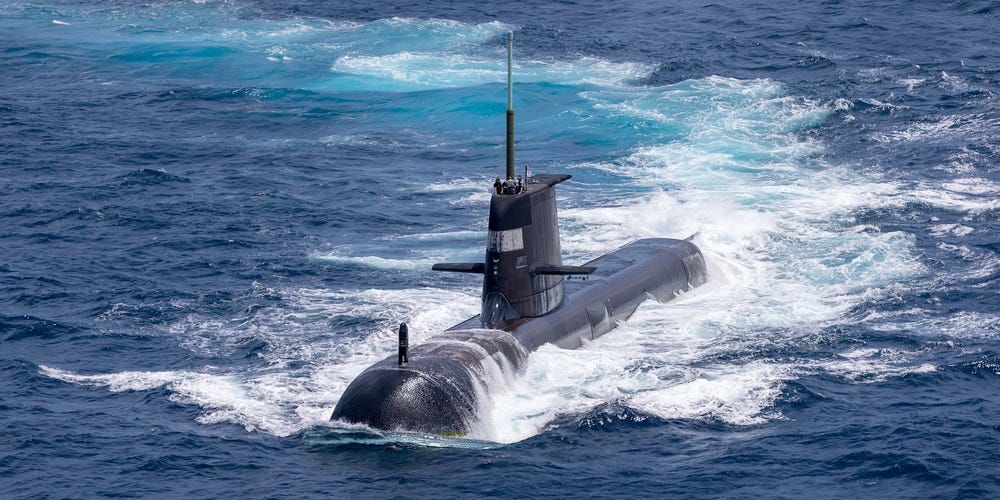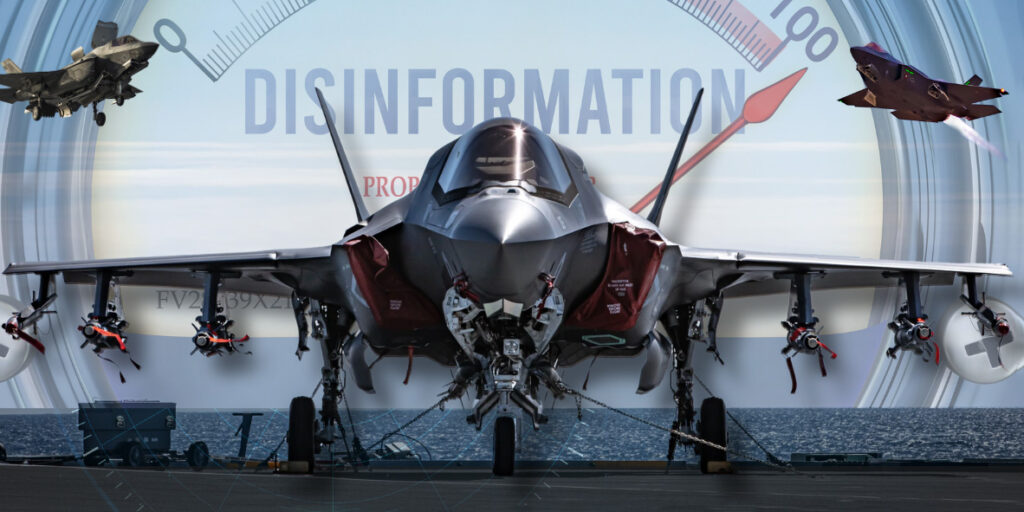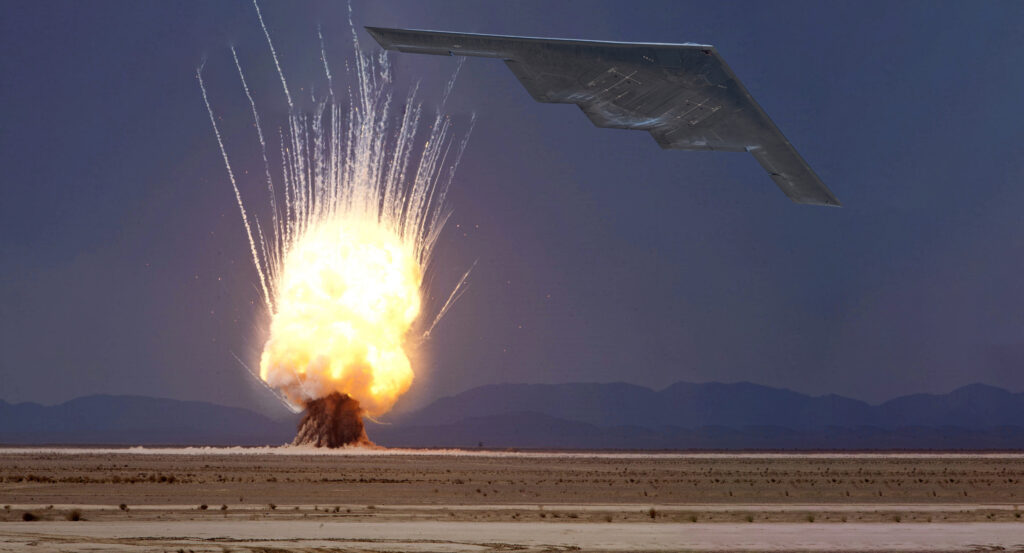Australia offers hints at how nuclear submarines will factor in
- By Alex Hollings
Share This Article

This article by Christopher Woody was originally published by Business Insider.
The submarines at the center of the recent Australia-UK-US security pact are still decades from delivery, but Australia already has an idea of where they will be operating.
The AUKUS pact announced in September is meant to deepen cooperation on defense technologies, the highest-profile of which are eight nuclear-powered submarines that the US and the UK will help Australia develop.
Officials have stressed that the pact is not directed at a specific country, but Australia’s ambassador to the US, Arthur Sinodinos, emphasized this week that it is in response to changes in regional security, which are largely been driven by China.
“The important thing is their lethality, their range, the number of things they can do,” Sinodinos said of the subs. “It’s part of a defense philosophy that we want to be able to — in [these] deteriorating strategic circumstances — be able to project our power further up, rather than taking an approach that all our defense has to be a defense of the mainland.”
Related: Strengthening Indo-Pacific security: Exercise Malabar
“This is about how we project power and therefore are able to shape the security environment in which we operate in the Indo-Pacific,” Sinodinos said at the Hudson Institute.
Australia currently operates six Collins-class submarines, commissioned between 1996 and 2003, powered by diesel engines and batteries.
Subs running on batteries can be quieter than some nuclear-powered subs, but nuclear propulsion allows subs to sail faster and farther, carry more weapons, and stay submerged longer — vital attributes if they are to spend more time “further up” in waters between the Indian and Pacific oceans and around first island chain, which includes Japan, Taiwan, and the Philippines.
Countries in the region have in recent years acquired more submarines and sought to improve their ability operate them. China in particular has dramatically expanded its undersea fleet and increased its surveys of nearby waters — including around Taiwan and between Indonesia and Australia.
Much about the submarine initiative remains undetermined, however.
Related: SECNAV’s strategic guidance: ‘Responsibility to deter’ China
The three countries have started a 12- to 18-month review to find the best submarine design, but the work ahead means the first submarine likely won’t be in the water until the late 2030s.
Sinodinos said Prime Minister Scott Morrison was “very clear” on the need “to build to an existing design” rather than spending years “playing around” with a new one.
Sinodinos also seemed to rule out leasing or buying subs in the interim, saying the Collins-class subs would get a life-extension and that AUKUS was “not about cannibalizing American and British submarine fleets or taking the next one that comes off the assembly line.”
“The intention is to build them in South Australia” and “to build to an existing design that is calibrated for our scale and the levels of complexity that we can handle,” Sinodinos said.
‘Temperature check’
Related: DoD map shows Russian and Chinese subs are too close for comfort
Sinodinos also stressed that AUKUS was “a capability pact” rather than a new alliance and that the subs are only part of it.
“It’s very much about also those other capabilities, whether we’re talking about artificial intelligence, machine learning, cyber, quantum computing, undersea warfare capabilities — a whole range of capabilities where [Morrison] feels that there’s great synergies in us working with the US and the UK,” Sinodinos said.
Other acquisition plans announced alongside AUKUS will add to Australia’s “long-range strike capabilities,” including Tomahawk missiles for navy destroyers and extended-range Joint Air-to-Surface Standoff Missiles and Long Range Anti-Ship Missiles for fighter jets.
Earlier this year, Australia announced plans to spend more than $200 billion over the coming decade on new weapons, including guided missiles built with US help and new warships and fighter jets, including US-made F-35s, allowing Australia’s military to operate more closely with US forces and to be more effective on its own.
“We are now increasing our defense spending going toward 2.5% of GDP, and we’re doing that because we want to be more proactive in shaping the environment in our region,” Sinodinos said.
“We’ve picked up on the fact that our strategic circumstances have changed” and that Australia must be able to shape events, deter adversaries, and respond in a way that’s “calibrated to complement what we can do with other partners,” Sinodinos added.
But some potential partners have concerns about the pact. China’s negative response was expected, but French backlash over Australia’s cancellation of their earlier submarine deal was unexpectedly fierce.
Countries with greater concerns about China, such as Vietnam, likely welcome the pact even if their public responses were neutral. Some, particularly Indonesia and Malaysia, were dismayed, reflecting concerns over what they see as a growing regional arms race, a diminishing role for the Association of Southeast Asian Nations, and potential nuclear proliferation.
Dialogue may ease some concerns, but differences will persist, especially with Indonesia and Malaysia, driven by “deeper differences in the way that they see the region,” Susannah Patton, a research fellow at the University of Sydney’s United States Studies Centre, told World Politics Review.
But their responses are a “temperature check” that will be valuable as the US and Australia look for “shared interests and how countries like these can work together in a region where China is playing an ever greater role,” Patton said.
Read more from Business Insider:
- These Marines disarm bombs for a living. Here’s what it’s like doing one of the US military’s most dangerous jobs.
- Colombia’s president says the latest kingpin to be captured is as big as Escobar. That may not be a good sign.
- It’s the 103rd anniversary of World War I ending — here are 15 stunning photos of the war to end all wars
- 13 striking photos of soldiers and civilians commemorating Veterans Day
- 5 ‘truths’ have guided US special operators for 40 years, but they face new tests from Russia and China — and at home
Feature image: Royal Australian Navy/POIS Yuri Ramsey
Related Posts

Alex Hollings
Alex Hollings is a writer, dad, and Marine veteran.
Related to: Breaking News, Military Affairs

The A-12 Avenger II would’ve been America’s first real ‘stealth fighter’

Why media coverage of the F-35 repeatedly misses the mark

It took more than stealth to make the F-117 Nighthawk a combat legend

